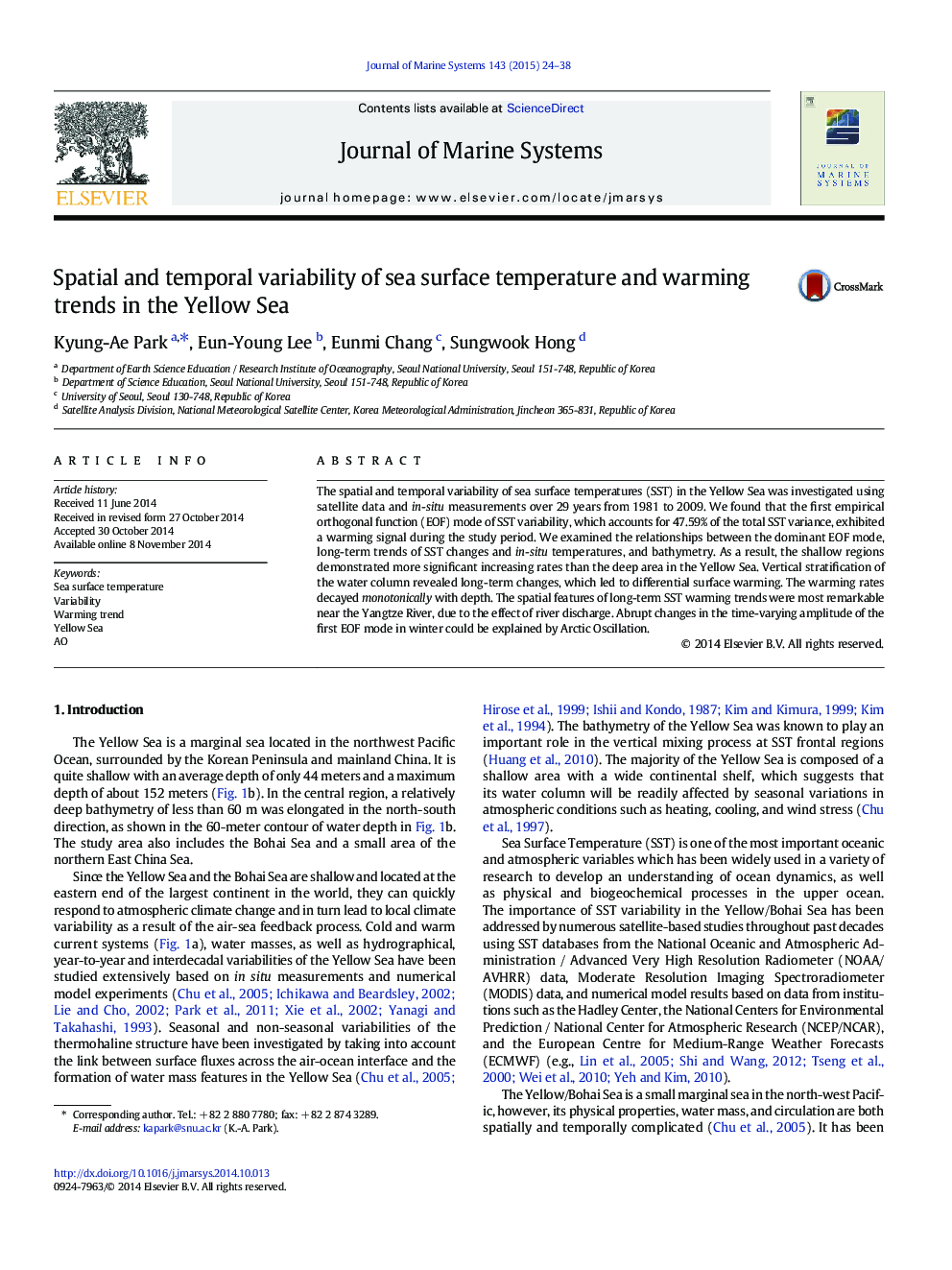| Article ID | Journal | Published Year | Pages | File Type |
|---|---|---|---|---|
| 6386748 | Journal of Marine Systems | 2015 | 15 Pages |
â¢We analyze the dominant sea surface temperature (SST) variability in the Yellow Sea.â¢We present the spatial pattern of regional warming response to global warming.â¢We address the role of shallow bathymetry on remarkable coastal SST warming.â¢Warming trend of sea water in the Yellow Sea decreased monotonically with depth.â¢Winter SST variability is explained by Arctic Oscillation though air-sea interaction.
The spatial and temporal variability of sea surface temperatures (SST) in the Yellow Sea was investigated using satellite data and in-situ measurements over 29Â years from 1981 to 2009. We found that the first empirical orthogonal function (EOF) mode of SST variability, which accounts for 47.59% of the total SST variance, exhibited a warming signal during the study period. We examined the relationships between the dominant EOF mode, long-term trends of SST changes and in-situ temperatures, and bathymetry. As a result, the shallow regions demonstrated more significant increasing rates than the deep area in the Yellow Sea. Vertical stratification of the water column revealed long-term changes, which led to differential surface warming. The warming rates decayed monotonically with depth. The spatial features of long-term SST warming trends were most remarkable near the Yangtze River, due to the effect of river discharge. Abrupt changes in the time-varying amplitude of the first EOF mode in winter could be explained by Arctic Oscillation.
